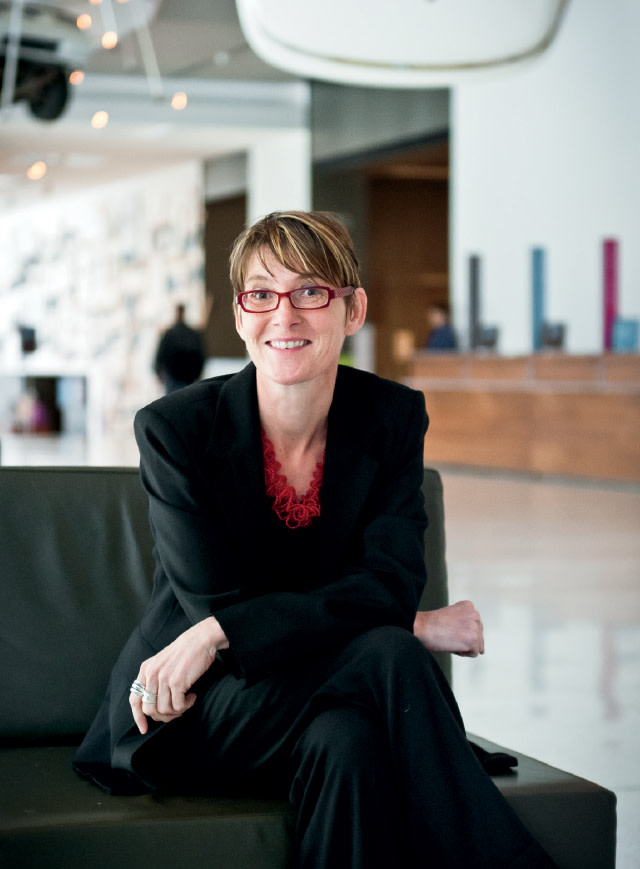Meet Catharina Manchanda, SAM’s Modern Art Curator

Image: Courtesy Seattle Art Museum
When leading a walk-through of the galleries at Seattle Art Museum, Catharina Manchanda wants people to appreciate what’s on the walls—and leave with some new ideas. “In every single exhibition I mount, I hope that people will come and have a conversation about an issue or set of issues and have an interesting aesthetic experience as well.” Manchanda came on board as SAM’s curator of modern and contemporary art in mid-2011, during a time of fundamental changes at the museum. Director Derrick Cartwright had resigned after just two years on the job. Manchanda’s predecessor Michael Darling quit SAM after four years for a post at the Museum of Contemporary Art in Chicago. By late 2012, with no permanent director in place for more than a year, the museum seemed to be holding its breath. Then Kimerly Rorschach took the helm in November and Manchanda and the rest of the curatorial staff began working with her to reevaluate exhibition plans and set a fresh course.
A lot of the post–World War II art Manchanda will be working with comes to SAM from the Virginia and Bagley Wright collection. Getting familiar with those artworks and the rest of SAM’s twentieth-century holdings has been a top priority. We got a taste of her taste last fall, when Manchanda selected a show for the Wright Exhibition Space in South Lake Union that crackled with synergy and sexual references. With a 13-and-a-half-foot-tall Andy Warhol Rorschach painting as its conceptual anchor and a spare, elegant installation that rippled from a Roy Lichtenstein still life to a Robert Gober–sculpted urinal, the show—titled a Rose Is a Rose Is a Rose—displayed that hard-to-define curatorial quality called a good eye.
Manchanda, a smart and down-to-earth 46-year-old, grew up in Germany where her mother worked as a seamstress in the costume department of the Stuttgart Opera and later designed and made clothing for her children: “She furnished me and half the family with the most amazing outfits.” Manchanda moved to the U.S. in 1990 on a graduate scholarship for curatorial studies, followed by posts at the Mildred Lane Kemper Art Museum in St. Louis and the Wexner Center for the Arts in Columbus, Ohio. As a curator, Manchanda believes place matters. At the Kemper she organized Beauty and the Blonde, deconstructing blondes in pop culture and American art from the 1960s onward. For the Museum of Modern Art, she assisted on a Gerhard Richter retrospective and book about his October paintings, prompted by the deaths of German political prisoners in 1977. “If I am working in Seattle,” she noted, “there are themes that are more pressing to address here…a different demographic, different geography and history that will suggest themes or make them resonate.”
While organizing exhibitions is Manchanda’s most obvious duty, overseeing acquisitions in her department is equally as important. SAM has faced criticism in recent decades for neglecting its core holdings while accepting new gifts of art that are all over the map. It’s left SAM with something of an identity problem: What is the museum’s focus? How can it distinguish itself from other museums around the country, especially with a notoriously small budget for acquisitions?
Manchanda believes the answer “lies in the history of the institution and the collections.” Rather than trying to be everything to everybody, she says, the museum must build on its strengths, with an awareness of its geography and core holdings in Asian, African, Northwest, and postwar modernism. The traveling exhibition of European masterpieces by Rembrandt, Van Dyck, and Gainsborough may get top billing, but SAM’s concurrent display of 50 minimalist and conceptual pieces gifted by Dorothy and Herbert Vogel, which Manchanda installed “in conversation” with related works at the museum, is no less important to SAM’s identity.
Strategic acquisitions are one way in which Manchanda hopes to leave a legacy at SAM. (And no, she won’t give away any specifics from her wish list yet.) In addition, she has another, more radical plan as well. She intends to stick around. Catharina and her husband, Nitin Manchanda, moved to Seattle in 2010 (the year before she was hired at SAM), when Nitin accepted a job with the engineering firm McKinstry. They bought a house on Capitol Hill and enrolled their nine-year-old twins Anya and Samir in school, Manchanda says, making Seattle their chosen home. SAM—which has seen four contemporary art curators in the past dozen years—stands to gain from it.
“There can be a real benefit to having institutional memory,” Manchanda said, “to build a collection, work with different constituents, to build community beyond a few years.” And although Manchanda is open to new responsibilities at the museum, she’s passionate about her current role. “In my heart of hearts, I am definitely a curator.”
The Vogel Collection: 50 Works for 50 States
Thru June 30, Seattle Art Museum, 1300 First Ave, 206-654-3100; seattleartmuseum.org
Published: April 2013




